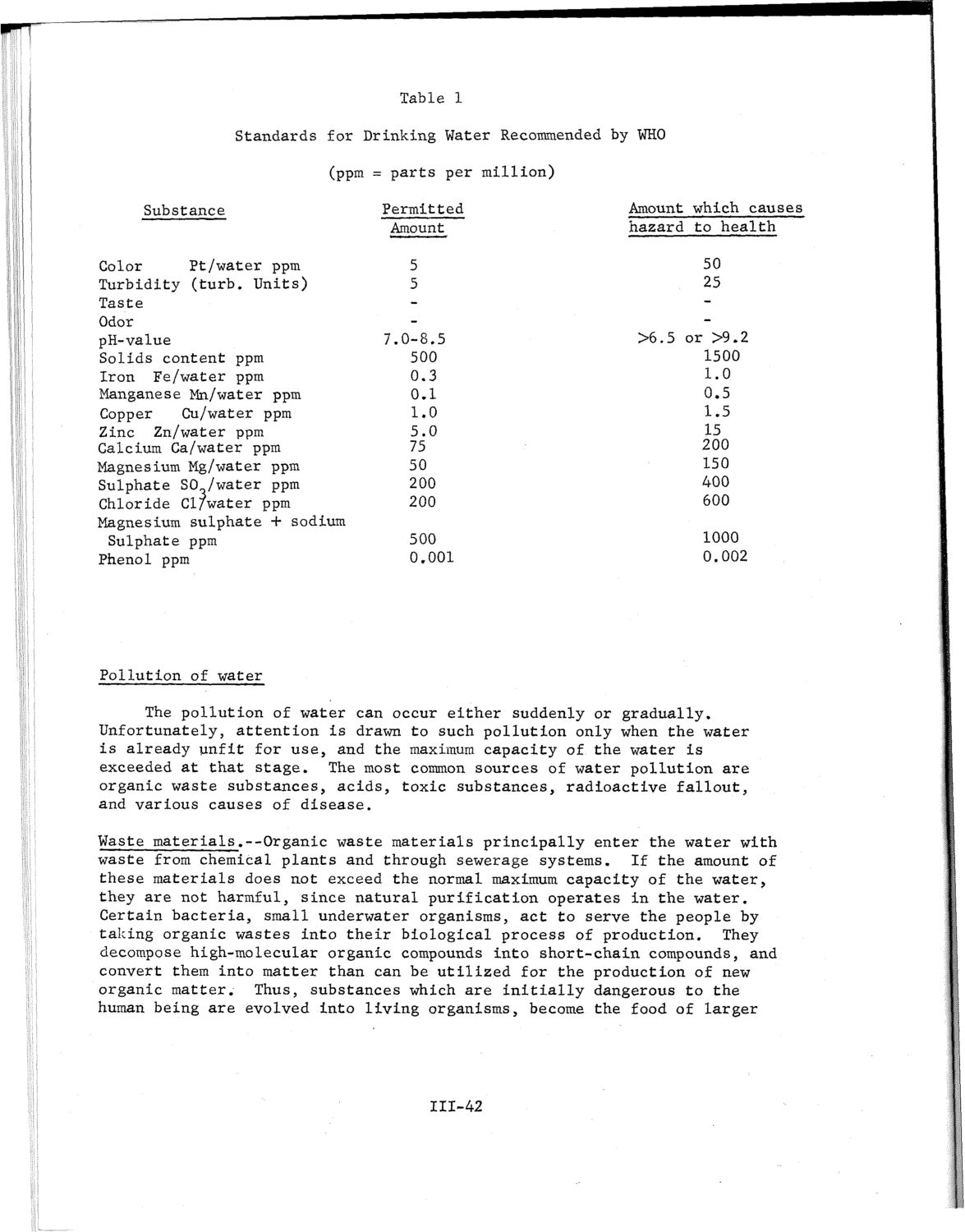| |
| |
Caption: SWE - Proceedings of the First International Conference of Women Engineers and Scientists
This is a reduced-resolution page image for fast online browsing.

EXTRACTED TEXT FROM PAGE:
Table 1 Standards for Drinking Water Recommended by WHO (ppm = parts per million) Substance Permitted Amount 5 5 Amount which causes hazard to health 50 25 >6.5 or >9.2 1500 1.0 0.5 1.5 15 200 150 400 600 1000 0.002 Color Pt/water ppm Turbidity (turb. Units) Taste Odor pH-value Solids content ppm Iron Fe/water ppm Manganese Mn/water ppm Copper Cu/water ppm Zinc Zn/water ppm Calcium Ca/water ppm Magnesium Mg/water ppm Sulphate SO /water ppm Chloride Cl/water ppm Magnesium sulphate + sodium Sulphate ppm Phenol ppm .0-8.5 500 0.3 0.1 1.0 5.0 75 50 200 200 500 0.001 Pollution of water The pollution of water can occur either suddenly or gradually. Unfortunately, attention is drawn to such pollution only when the water is already unfit for use, and the maximum capacity of the water is exceeded at that stage. The most common sources of water pollution are organic waste substances, acids, toxic substances, radioactive fallout, and various causes of disease. Waste materials.--Organic waste materials principally enter the water with waste from chemical plants and through sewerage systems. If the amount of these materials does not exceed the normal maximum capacity of the water, they are not harmful, since natural purification operates in the water. Certain bacteria, small underwater organisms, act to serve the people by taking organic wastes into their biological process of production. They decompose high-molecular organic compounds into short-chain compounds, and convert them into matter than can be utilized for the production of new organic matter. Thus, substances which are initially dangerous to the human being are evolved into living organisms, become the food of larger 111-42
| |